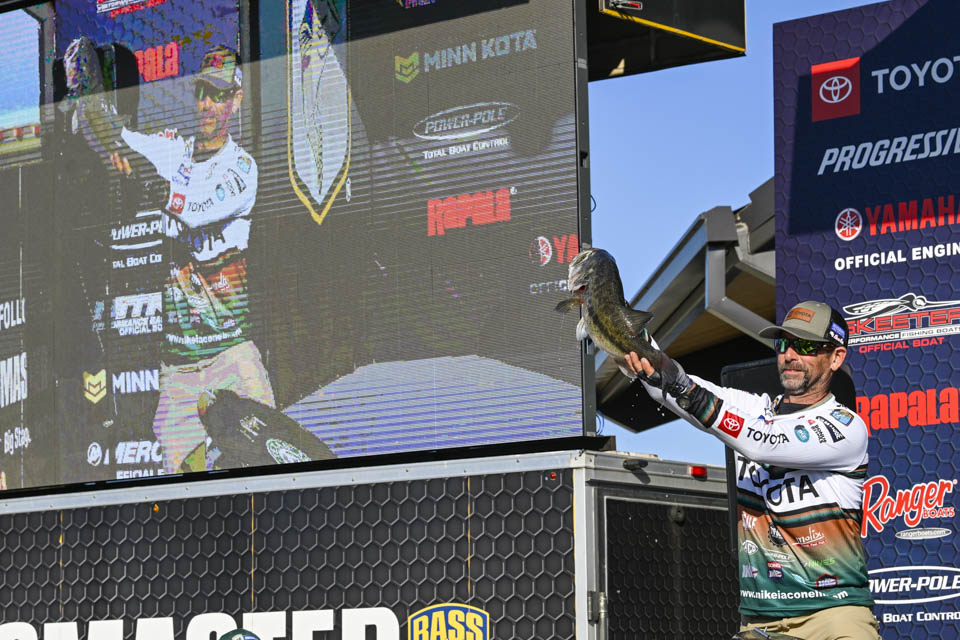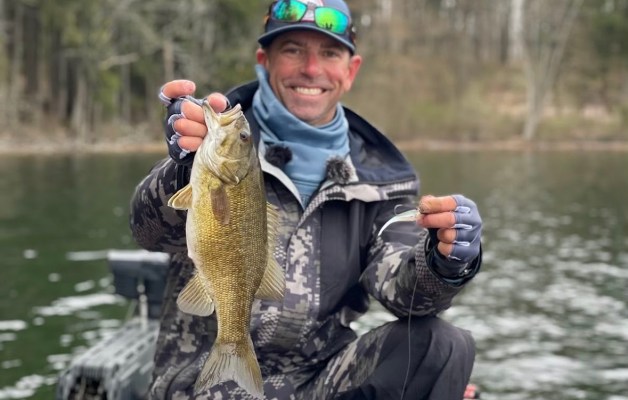
My 13-year-old son, Vegas, and one of his buddies fish a youth team bass tournament league that typically draws 30 to 40 boats. When I launched them at an event earlier this month, I noticed that decaying matter from the bottom had floated to the surface.
That told me the lake was turning over. I knew the young anglers who were fishing the tournament were going to struggle to get bites. Only one team caught a limit of bass. Vegas and his partner finished fifth with one bass, a 4-pounder. Most of the teams failed to catch a fish.
The dreaded fall turnover always makes for awful fishing. It has already started up north where I live and will soon be happening farther south. This phenomenon is basically a mixing of the upper and lower layers of water.
During the summer, most lakes stratify into two layers that are demarcated by a thermocline. The water above the thermocline is warmer and has sufficient oxygen content to support fish. The water below the thermocline is much cooler and lacking in oxygen.
In autumn, the surface layer eventually cools to the point that the thermocline disappears and the two layers begin mixing. This puts bass into a serious funk. I think of it in terms of when I have a headache. I still manage to function, but I’m not my normal, cheerful self.
Fortunately, the turnover is short-lived and is over in a week or two. The bass snap back, and they’re hungry. Then again, you can catch bass during a turnover. It will be challenging, but it’s not a lost cause. There are a number of things I do when I have to deal with a lake that’s turning over.
Run from the turnover: On large bodies of water, and especially on reservoirs, the turnover does not happen all over the lake at the same time. If the turnover is happening on the upper end of the lake, run to the dam or vice versa. Even if you fish the same lake every week, you may be able to avoid bass that have a turnover headache.
Go shallow: You might have been on the best deep bite in the world prior to the turnover. But when this phenomenon happens, go shallow, bro. There is less mixing of water in the shallows, so bass living no deeper than 5 feet are not nearly as affected. There are always some bass in shallow water, and some of the bass in deep water will move shallow to escape the turnover.
This is typically a power-fishing gig for me. I’ll cover water with things like crankbaits, spinnerbaits and swimming jigs. I don’t expect to get a lot of bites, but I’ll get enough to make it worthwhile.
Wind, wind, wind: You often hear fishermen say, “The wind is your friend.” That’s especially true during the fall turnover. When wind and waves are beating on the bank they quicken the water-mixing process. The conditions are more to a bass’ liking, and the water movement also makes for better feeding conditions.
This is another instance for power fishing. I love throwing jerkbaits and vibrating jigs when waves crash on the bank.
Current: Just as with the wind, a current enhances the mixing of water and reduces the impact of the turnover on fish. I look for moving water in feeder streams, and in creek arms that have water running into them. A causeway that funnels water through a bridge is another place where you’ll find bass taking advantage of a current.
Up where I live, lakefront homeowners put bubblers into the water near their docks to hinder the growth of aquatic vegetation. These devices also create a current that attracts bass.
Isolated ladder cover: This can be hard to find, but it’s a good one. Ladder cover is anything that gives a bass something they can travel along from shallow to deep water. Two prime examples are a long dock and a large fallen tree. The water may be only 2 feet deep near the bank, but it could be 20 feet deep and the end of the dock or tree.
During a turnover, ladder cover gives a bass a comfort zone to follow from one depth to another. But this only holds true if the ladder cover is isolated. A bank with a string of long docks, for example, spreads the bass out and makes them harder to find. A single dock or laydown on a bank is a bass magnet.
No matter what you do, the bite is going to be tough during a turnover. But if you take advantage of these tips, your day on the water is much less likely to be a lost cause.
You can learn more about how I fish during a turnover and under other conditions at www.mikeiaconelli.com or www.youtube.com/c/goingike.





